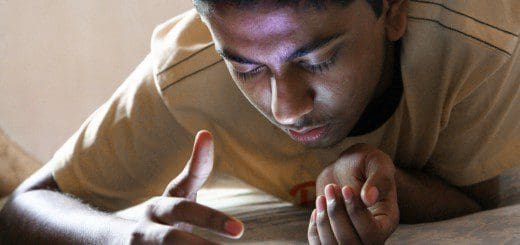An App Designed to Stop Lunchroom Bullying
Have you ever had to sit by yourself in the lunchroom? Seventeen-year-old Californian Natalie Hampton has—for two whole years—and she’s invented an app to make sure no one else ever has to go through that.
When Hampton—an outgoing girl who had always had lots of friends—moved a new school in seventh grade, she had high hopes of making new pals, but that’s not what happened. Instead, she was completely ostracized by the other students.
The worst part was lunch: she would walk into the crowded cafeteria and see that no one was willing to eat with her.
This lasted for two years.
To make matters worse, none of the adults at the school supported her. The school counselor even interrogated her on a weekly basis, trying to get her to admit what she had done to make the students behave this way.
The school’s refusal to support her made the bullying even worse. Finally, when she was ready for high school, she decided to change schools and start all over again. At her new high school, when she walked into the lunchroom and didn’t know anyone, one single student saw that she looked lost and invited her to eat lunch together.
“It saved my life,” she says in her TEDx talk.
Hampton decided to share the story of her difficulties because she wanted to help other kids the way that one person helped her. She notes that even small acts that show kindness, empathy and support to those being bullied can mean so much.
She began to pay it forward, inviting other people who seemed lonely to sit with her at lunch. After witnessing how successful and useful this approach could be to support her peers, she decided to develop an app that would help even more people.
Her app is called “Sit With Us”. Here’s how it works:
- Students to sign up to be lunchroom “ambassadors.”
- They post on the app when they have an open seat at their table.
- Then, students who are looking for a group to eat lunch with can use the app to find a place to sit.

Screenshot of “Sit With Us” app
The app saves students from embarrassment: if they have to physically move from table to table asking to join a group, they could be rejected over and over again. But with the app, they can find out discreetly where seats are available, and they’ll always be accepted.
“The first step to a warmer, more inclusive community can begin with lunch,” Hampton’s website says.
We found Hampton’s idea to be a practical step that all teens can use, to show kindness and support to their peers. In addition to inviting people to sit with you over lunch, there are also some other approaches you can take to stop bullying. For example, you could:
- Deescalate tensions by developing statements against bullying. The statements could be as simple as, “Hey, it’s not cool to reject people.” By using calm, simple statements, you draw boundaries against bullying behavior, without triggering further conflicts.
- Stand very close to the individual being bullied. Sometimes a small action like this tells the bullies that you don’t approve of their behaviors and you stand with your peers.
- Follow up later with the person who was targeted to show your continuing support. The support can be in the form of a note, a text, etc. The purpose here is to let your peer know that they do not walk alone and that you appreciate them for who they are.
What does lunchroom bullying feel like to you—either as the targeted person, or as one who has witnessed it? What do you think of this app’s approach to ending bullying? What can be done to help stop bullying at your school? Comment below to share your thoughts and strategies with us.






Recent Comments